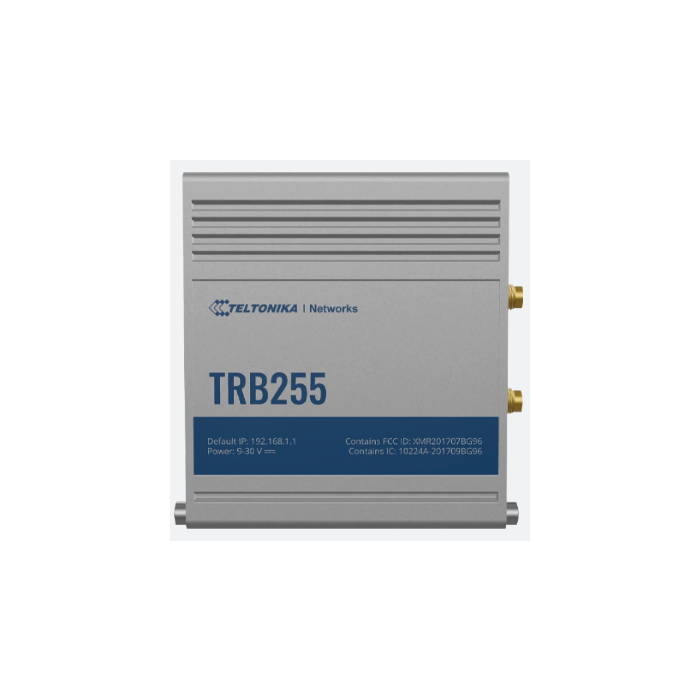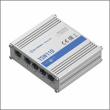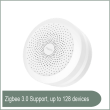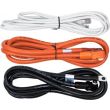Back to Top
TRB225 LTE M1/NB-loT Gateway
Description:
- RB255 can be used to integrate modern and legacy industrial equipment into one solution via RS232, RS485 & Ethernet interfaces.
- This industrial LTE Cat M1 & NB-IoT gateway is backward compatible to EGPRS (2G) networks.
- It can still be used with 2G network, however in case it gets shut down, there is a possibility to switch to LPWAN connectivity options.
Technical Data:
- Mobile 4G/LTE (Cat M1), NB-IoT, 2G
- CPU Qualcomm, MIPS 24Kc, 650 MHz
- Memory 16 MBytes Flash, 64 MBytes RAM
- Powering option 16pin terminal, 9-30 VDC
- SIM 2 x Internal SIM holders (2FF)
- Antenna connectors 1 x SMA for mobile, 1 x SMA for GPS
- Ethernet 1 x 10/100 Ethernet port
- GNSS GPS, GLONASS, BeiDou, Galileo, QZSS
- Inputs/Outputs On 16pin socket: 3 x Digital input/Digital open collector output (configurable), 1 x Analog input
- Serial 1 x RS232, 1 x RS485
- Status LEDs 3 x Connection type, 3 x Signal strength, 2 x Ethernet, 1 x Power
- Operating temperature -40 °C to 75 °C
- Housing Aluminium housing with DIN rail mounting option
- Dimensions (W x H x D) 83 x 25 x 74 mm
- Weight 165 g
| SKU | TRB2550000000 |
|---|
Write Your Own Review









